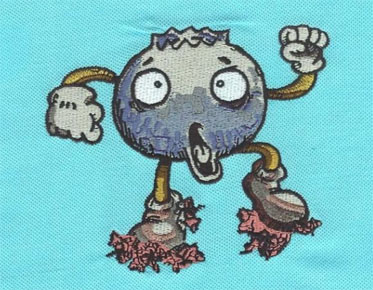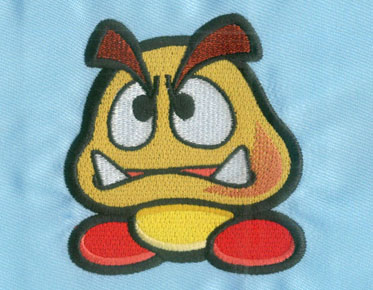Steps to Stitch Shadow When Embroidery Digitizing
Adding shadows to embroidery designs can bring
depth, dimension, and a sense of realism to the artwork. The loop method is a
popular technique used to stitch shadows, enabling smooth transitions and
realistic shading. By mastering this method and leveraging embroidery
digitization and embroidery digitizing services, you can enhance the visual impact of your embroidery projects. In
this article, we will explore the step-by-step process of stitching shadows
using the loop method, highlighting the role of embroidery digitization along
the way.
Following are the
steps to stitch shadow.
1. Preparing the Design:
Start by selecting a design that lends itself
well to shadowing, such as objects with pronounced shapes or figures with
distinct contours. Analyze the design to identify areas where shadows should be
added for depth and dimension.
2. Choosing Shadow Colors:
Select thread colors for the shadow that are darker than the base color of the design. Gradually transition from the base color to the shadow color to create a realistic shadow effect. Experiment with different color combinations to achieve the desired result.
3. Mapping Out the Shadow Area:
Mark the areas where the shadows will be
stitched on the fabric or use embroidery digitization to visualize and plan the placement of the shadows. Clearly
defining the shadow areas helps guide the stitch direction and ensures a cohesive
and realistic outcome.
4. Securing the First Thread:
Thread your needle with the base color thread.
Starting from the edge of the shadow area, bring the needle up through the fabric
and create a small loop.
5. Introducing the Shadow Color:
Introduce the shadow color thread by passing
the needle through the loop created by the base color thread. Adjust the
tension to ensure a smooth transition between the colors. Repeat this process,
looping the shadow color thread through the previous loop, gradually increasing
the number of loops as you move deeper into the shadowed area.
6. Adjusting Loop Length and Density:
Vary the length and density of the loops to create a realistic shadow effect. Longer loops and denser stitching produce a darker shadow, while shorter loops and lighter stitching create a softer shadow. Experiment with different loop lengths and densities to achieve the desired shading effect.
7. Blending the Colors:
Blend the base color and shadow color threads by alternating between looping the base color through the shadow color loops and looping the shadow color through the base color loops. This blending technique helps create a seamless transition between the colors, enhancing the realism of the shadow.
8. Fine-Tuning with Embroidery Digitization:
Embroidery digitization plays a crucial role
in optimizing the shadow effect. By utilizing custom embroidery digitizing services, you can visualize the shadow
placement on a computer screen, adjust stitch angles and densities, and make
any necessary modifications for precise shading. This allows for greater
control and accuracy in achieving the desired shadow effect.
9. Practice and Refinement:
Mastering shadow stitching requires practice
and attention to detail. Experiment with different thread combinations, loop
lengths, and blending techniques to refine your technique. Practice on sample
fabric or utilize embroidery digitization to simulate and perfect the shadow
effect before working on the final embroidery design.
In conclusion, stitching shadows using the
loop method is a skill that can elevate the artistry of your embroidery
designs. By carefully selecting shadow colors, mastering loop techniques, and
leveraging the capabilities of embroidery digitization and professional embroidery digitizing services, you can achieve
remarkable shading effects. Remember to practice regularly, experiment with
different thread combinations, loop lengths, and blending techniques, and pay
attention to the fine details. With dedication and persistence, you can master
the art of stitching shadows, adding depth and realism to your embroidery
projects and showcasing your creative expertise.



